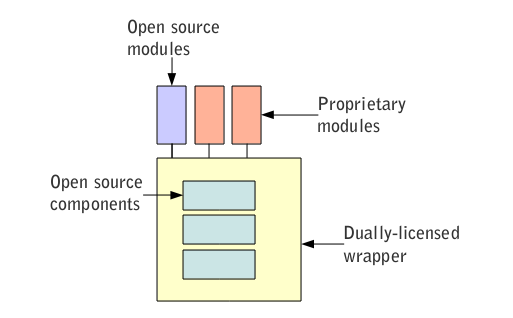Open Core continues to receive substantial bashing, both after the announcement of the new SugarCRM 6 and after the recent OpenStack intitiative. Sugar introduces a new interface that is not available in the open source edition (they are not the first in this: actually, Open-Xchange did it before them, making the javascript code for the new AJAX interface not usable for commercial activities), but despite this they claim “We are an open source company” In the OpenStack announcement, The Register reports that it was not possible for NASA to introduce the changes to Eucalyptus because that would have undermined the capability of the company to make users pay for the enterprise edition. I already wrote in the past that Open Core is not evil per se, but that it does introduce difficulties in encouraging external participation; both because there is a very thin line in feature selection between the community and enterprise edition, and because open core naturally hampers participation. I had some readers asking me why, and I will respond with a subset of my LinuxTag slides:

Open core is usually built by a set of internal open source components held together by a dual-licensed wrapper, plus proprietary modules on the outside. One of the best examples of this is Zimbra (an excellent product on its own) but MySQL in recent editions can be included in the same group. As discussed in previous posts, dual licensing hampers contributions because it requires an explicit agreement on ceding rights to the company that employs it, in order to be able to relicense it for the proprietary edition. This means that Open Core companies, in itself, will have an easier time in monetizing their software, but will receive much less contributions in exchange. As I wrote before, it is simply not possible to get something like Linux or Apache with Open Core.
Again: open core is not bad per se (but I would have been more cautious in calling Sugar “an open source company”, for whatever definition you have of that). But it is a tradeoff: monetization versus contributions. And, my bets are on contributions, as OpenStack demonstrates – you need leverage and external resources to go beyond what a single company can do.